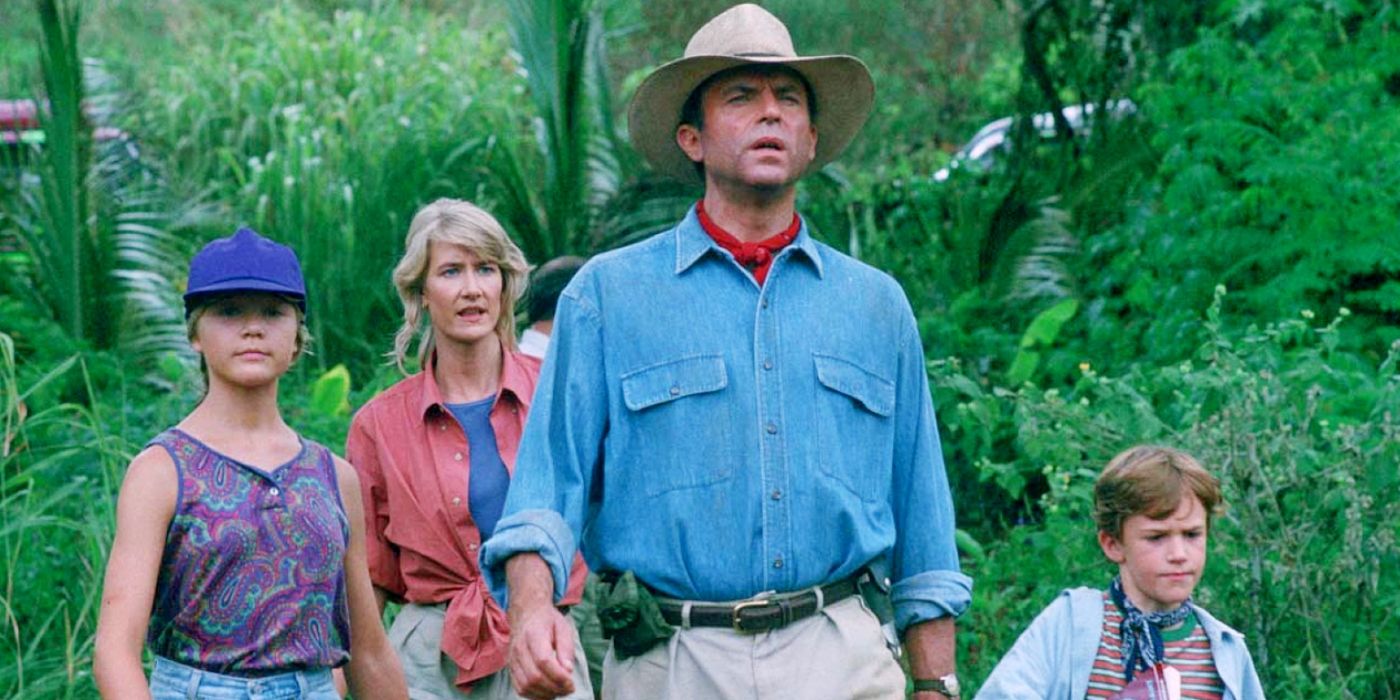
The Secret Source of Jurassic Park's T-Rex Roar

Discover the surprising and creative process behind the iconic T-Rex roar in Jurassic Park, and the unlikely sources of the legendary sound.
The Art of Creating Movie Magic
Jurassic Park's famous T-Rex roar came from an unlikely source, and how it was created will surprise audiences. Foley artists and sound designers are often asked to achieve the impossible. Directors want their futuristic lightsabers, roaring dragons, and howling ghosts to sound realistic, but no one knows what these things sound like since they don’t exist in reality. It is up to engineers and artists to invent these sounds and find a way to bring them to life onscreen. To this end, sound designer Gary Rydstrom had his work cut out for him when he began working on director Steven Spielberg’s 1993 blockbuster Jurassic Park. The story of a theme park filled with genetically engineered dinosaurs, the movie is an adaptation of author Michael Crichton’s hit novel of the same name.
Sam Neill's Alan Grant distracts the T-Rex in front of a flipped jeep in Jurassic Park
Jurassic Park’s iconic ending centers around an all-important T-Rex roar, without which the entire climax could have been a letdown. Although a groundbreaking blend of practical and computer effects was used to bring Jurassic Park’s dinosaurs to life onscreen, the movie’s beasts would have been nowhere near as impressive if their vocalizations sounded goofy. Since no one knows what a real T-Rex roar sounds like, Rydstrom and his team needed to get inventive when they worked on the blockbuster.
Publicity still of Steven Spielberg stood in front of a T-Rex's legs for Jurassic Park (1993), with a T-Rex from Jurassic World pasted in front to the right.
The Surprising Sounds of Jurassic Park
Per an NPR interview with Gary Rydstrom, the sound designer began the process of crafting the T-Rex roar by recording a wide variety of animal sounds. The technician knew that only the perfect blend of sounds would work, resulting in him trying “to get every interesting animal recording we could find.” This process paid off, as the most unexpected animal noises were used for Jurassic Park’s iconic T-Rex scenes. Rydstrom and company then painstakingly looked through the recordings in search of some gold and found it in the strangest of places. For example, the sound of tortoises mating was used to provide the trademark chirps shared between the movie’s Velociraptors.
As if that weren’t weird enough, Rydstrom told Vulture that his own Jack Russell terrier also provided some of the sounds that went into the ferocious snarl of the T-Rex. Rydstrom admitted that this nepotism wasn’t an isolated incident, since the sound of Buster the terrier eating his puppy chow was previously used for the distinctive crunch of the T-1000 breaking skull bones in Terminator 2: Judgment Day. However, Buster wasn't the only animal that contributed to the voice of Jurassic Park’s T-Rex. Another three animals were added to the mix, each of them more unlikely than the last.
The Unlikely Origins of the T-Rex Roar
Per the book The Making of Jurassic Park: An Adventure 65 Million Years in the Making, the T-Rex’s roar was built from sounds produced by a tiger, a baby elephant, and an alligator. The high-pitched baby elephant’s roar is the striking part that most viewers instantly recognize, while the alligator’s deeper grumble provides the low-frequency elements of the composite mix. This results in a sound that is neither too squawking nor too bass-forward, meaning the T-Rex sounds angry but also fully grown and massive. This memorable mix cropped up throughout the rest of the Jurassic Park franchise and, despite its unlikely origins, remains a legendary bit of movie sound design.












